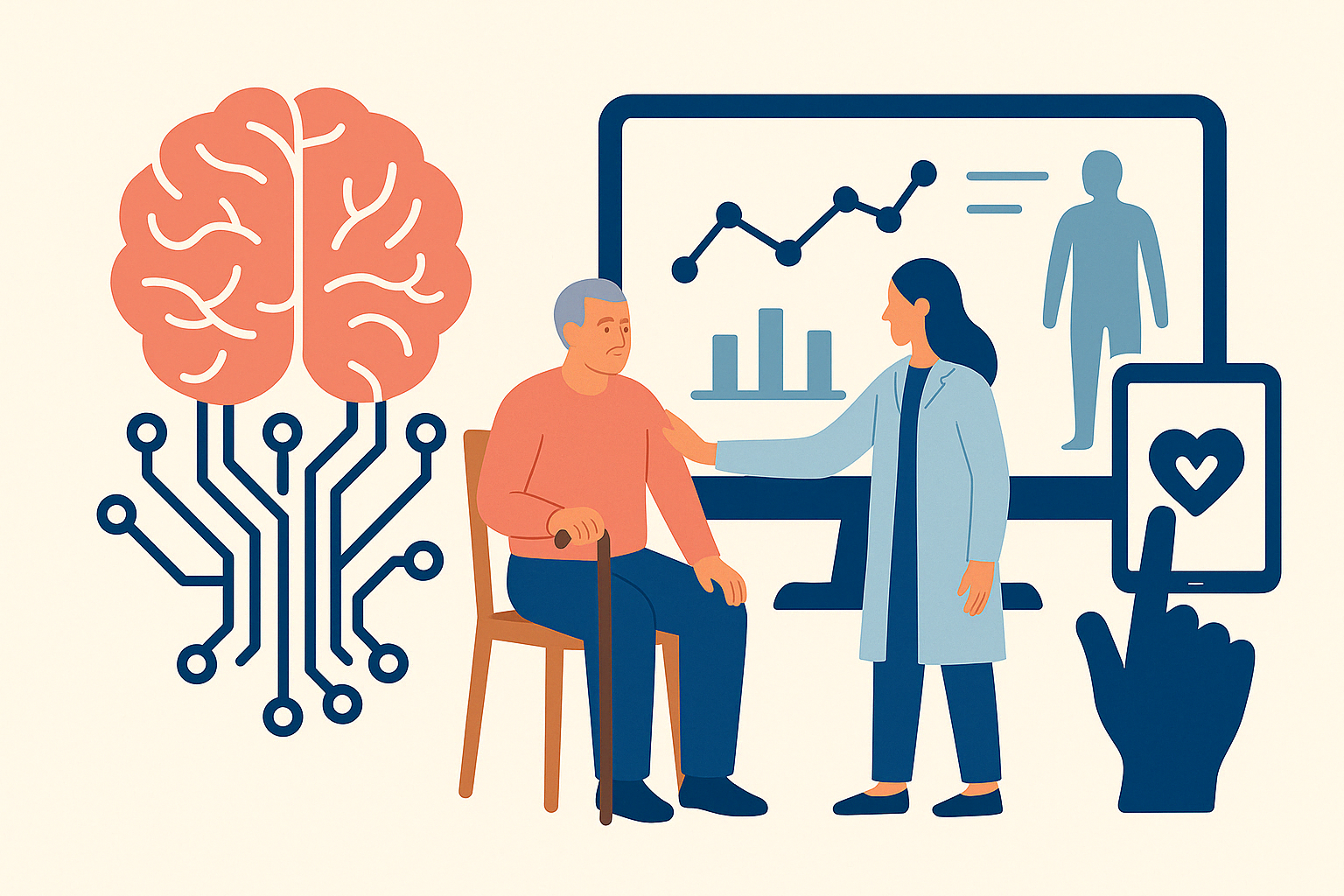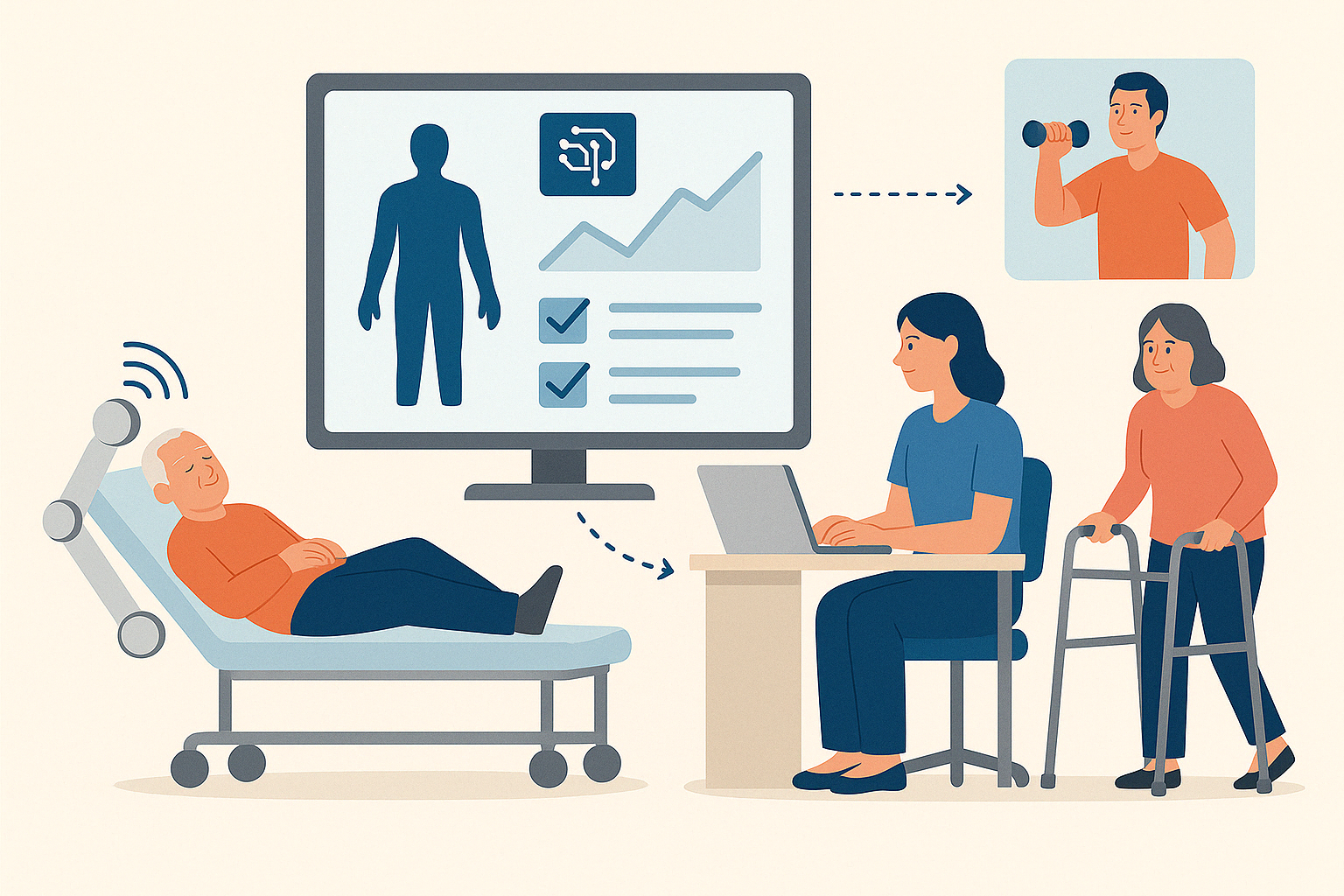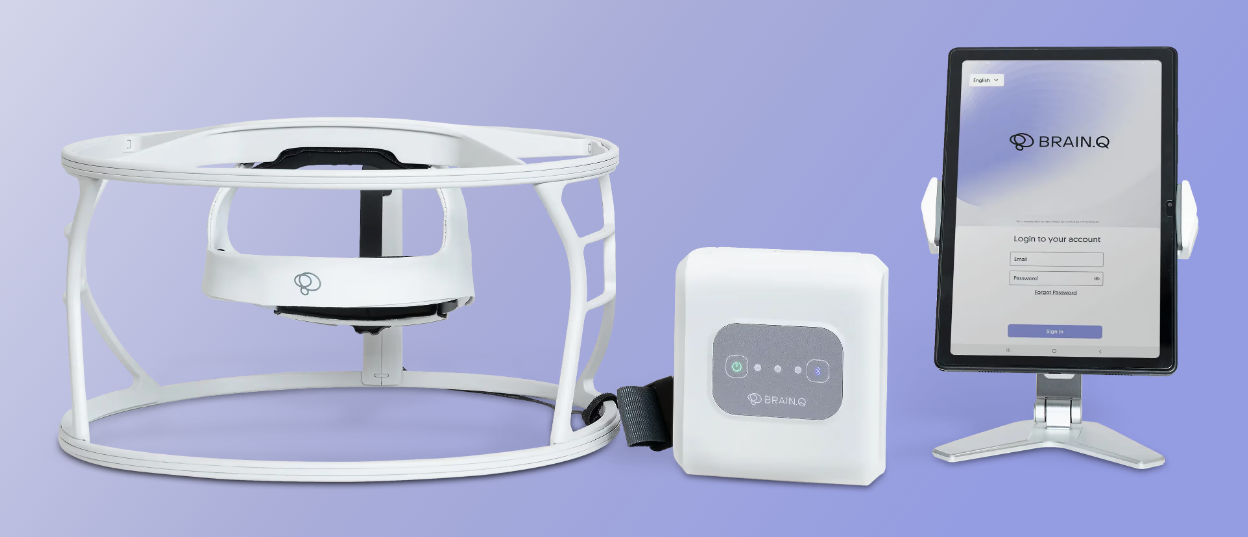How AI Can Power Precision Neurotherapeutics, Stroke Recovery, and Expand Access to Care

Stroke remains one of the leading causes of long-term disability worldwide, affecting over 100 million people globally. As our population ages and acute interventions improve, the number of stroke survivors living with disabilities is expected to double in the next two decades. This growing crisis demands innovative approaches that go beyond traditional rehabilitation methods—approaches that can deliver more effective, personalized care while expanding access to those who need it most.
One of the most promising frontiers in healthcare is artificial intelligence (AI), which is revolutionizing how we approach stroke recovery. With machine learning, data analytics, and adaptive technologies, healthcare innovators are creating precision neurotherapeutic solutions that can significantly improve outcomes for stroke survivors while making quality care more accessible and sustainable.

Precision Neurotherapeutics: A New Era in Stroke Recovery
Precision neurotherapeutics represent a paradigm shift in stroke recovery by striving to tailor therapeutic strategies to each individual’s unique neurological profile, functional deficits, and neuroplastic potential. Unlike the traditional one-size-fits-all approach, precision neurotherapeutics apply advanced, technology-driven methods to optimize recovery outcomes for every patient.
At its core, precision recovery leverages detailed assessments — including neuroimaging, neurophysiological biomarkers, and standardized functional evaluations — to predict each patient’s recovery trajectory and guide personalized interventions. By understanding the specific brain networks impacted by stroke and the brain’s innate capacity for reorganization, precision neurotherapeutics offer a highly individualized pathway to recovery.
Unlike conventional rehabilitation models, precision neurotherapeutics embrace the fact that stroke recovery is highly variable, shaped by factors such as the initial severity of impairment, the structural integrity of neural pathways, and the patient’s neuroplastic responsiveness. Powered by AI and machine learning, this approach analyzes complex data to uncover each patient’s distinct recovery profile and create customized treatment protocols that maximize neurorestorative potential.
Key elements of precision neurotherapeutics could potentially include:
- Comprehensive assessment of neural and functional deficits
- Personalized therapy targeting specific impaired networks
- Adaptive protocols that evolve based on real-time progress
- Data-driven decision making throughout the recovery journey
- Technology-enabled solutions that extend beyond clinical settings
By tailoring interventions to individual needs and recovery patterns, precision neurotherapeutics aim to optimize neuroplastic processes and improve functional outcomes beyond what conventional approaches can achieve.
Traditional vs. Precision Neurotherapeutic Approaches
While traditional stroke rehabilitation methods have provided a foundational standard of care for decades, their core methods have remained relatively unchanged, which can present challenges in terms of both efficacy and accessibility. These conventional approaches typically include:
- Standardized protocols based on broad stroke categories
- Limited options for home-based rehabilitation
- Minimal objective data collection on progress
Traditional rehabilitation faces continued challenges, including therapist shortages, limited healthcare resources, and geographical barriers to specialized care. Conventional rehabilitation often fails to account for the unique neurobiological characteristics of each patient's stroke and recovery potential.
Precision neurotherapeutics recognize that optimizing stroke recovery requires personalization, tailored treatment, and adaptive progression—elements that AI-powered solutions are uniquely positioned to deliver.
The Role of AI in Precision Neurotherapeutics
Artificial intelligence is transforming stroke recovery by enabling personalization, monitoring, and therapeutic precision. AI's capacity to analyze vast datasets, identify patterns, and generate tailored interventions makes it an ideal technology for advancing stroke recovery.
Personalizing Treatment Through Machine Learning
Machine learning algorithms can analyze complex neurological data to identify the specific brain networks affected by a stroke and determine optimal therapeutic approaches. For example, AI systems can:
- Analyze electroencephalography (EEG) data to identify spectral patterns associated with motor function and stroke recovery
- Identify patient-specific biomarkers that indicate responsiveness to particular interventions
- Generate personalized therapy parameters based on individual neurophysiological profiles
Allowing personalization to go beyond traditional approaches, which often rely on broad clinical categories rather than individual neurobiological characteristics.
Adaptive Feedback and Progress Tracking
AI systems offer capabilities for continuous monitoring and adaptive responses, helping to drive meaningful advances in stroke recovery:
- Real-time feedback during therapeutic sessions helps patients make adjustments that optimize performance
- AI can analyze patient performance and dynamically adjust task difficulty or stimulation parameters to match individual needs
- Wearable sensors can collect movement, physiological signals (e.g., heart rate, muscle activity), and usage patterns
- Remote monitoring capabilities allow clinicians to track therapy
These capabilities can create a recovery ecosystem that adapts to the patient's changing needs and abilities throughout the recovery journey.
Enhancing Neuroplasticity with Precision Neurotherapeutics
AI technologies have increasing potential to facilitate neuroplasticity in stroke recovery by analyzing patient data and delivering personalized neurotherapeutic interventions.
The future of Advanced AI systems shows potential to:
- Calibrate neurotherapeutics that stimulate specific brain networks
- Identify optimal timing for interventions based on neuroplasticity
- Deliver progressively challenging tasks that are adjusted to the patient’s abilities
By analyzing, calibrating, and continuously adapting to each patient’s evolving needs, AI-guided precision neurotherapeutic approaches have the potential to accelerate recovery and maximize functional gains by directly supporting the brain’s natural capacity for recovery and reorganization.
Benefits of AI-Powered Precision Neurotherapeutics
The integration of AI into stroke recovery also plays a critical role in tackling the wider systemic challenges of stroke care.

Improved Recovery Outcomes Through Precision Neurotherapeutics
The hope for this technology indicates that individualized, precisely targeted interventions can enhance stroke recovery outcomes:
- Quicker restoration of functional independence
- Greater improvements in specific motor functions
- Reduction in long-term disability
- Enhanced quality of life for stroke survivors
Results from a Phase 2 clinical trial conducted across 15 sites with 98 patients suggest that participants receiving BRAIN.Q therapy were three times more likely to achieve freedom from disability compared to those receiving standard care alone.
Greater Efficiency and Reduced Clinician Burden
AI-powered solutions may also help mitigate the growing shortage of health care professionals by increasing efficiency and scalability:
- Autonomous therapy delivery reduces the need for constant supervision
- Remote monitoring enables healthcare professionals to manage and support multiple patients
- Automated progress tracking streamlines workflow
- Data-driven insights support informed and efficient clinical decision making
These efficiencies are crucial for scaling rehabilitation services to meet the growing need while maintaining the quality of care.
Better Patient Engagement and Adherence
Patient engagement is important for rehabilitation success. AI-powered solutions can enhance engagement through:
- Interactive, gamified therapy experiences that boost motivation and adherence
- Clear, real-time visualization of progress
- Enabling home-based therapy that fits into daily life
- Adaptive feedback and encouragement help patients stay focused and feel supported throughout their recovery journey.
The result of enhanced patient engagement is a marked improvement in therapy adherence—an essential driver of successful recovery. BRAIN.Q’s AI-powered Therapeutic System has achieved adherence rates of 90% in a phase 2 study.
Examples of AI in Action for Stroke Patients
AI applications in stroke recovery are rapidly evolving from promising research to practical clinical solutions:
- Virtual reality systems with AI-driven feedback can help patients relearn complex movements through immersive, engaging environments.
- Robotic exoskeletons with machine learning algorithms can adapt resistance and assistance levels based on individual performance patterns.
- Smart sensors track functional use of affected limbs, physiological signals (e.g., heart rate, muscle activity), and usage patterns in real-world settings, providing insights beyond the clinic.
- Mobile applications with AI guide patients through daily therapy routines, adjusting exercises based on performance and engagement.
These AI-powered solutions are moving from research settings into the clinic, allowing for personalization of treatment, continuous monitoring, and more engaging rehabilitation experiences for stroke patients.
BRAIN.Q's AI-Powered Noninvasive Therapeutic System for Stroke Recovery
Among the innovations in AI-powered stroke recovery is BRAIN.Q's Therapeutic System—a neurorecovery platform that uses extremely low-frequency electromagnetic field (ELF-EMF) therapy delivered through a wearable device to support neurorecovery in adult patients with ischemic stroke, when used in conjunction with standard therapies. The innovation lies in how the therapy is calibrated: BRAIN.Q's proprietary AI analyzes large datasets of electroencephalography (EEG) spectra recorded during functional motor tasks to identify the precise frequency patterns associated with healthy motor function.
These spectral patterns are then translated into tailored electromagnetic field therapies that are applied non-invasively to the patient's brain, aiming to support "retraining" of impaired neural networks and promote neuroplasticity. The system operates on three key parameters:
- Field intensity (<1.0 Gauss)— low-intensity fields
- Frequency (1-100 Hz)—AI-optimized frequencies that target specific neural activity patterns
- Duration—standardized protocols of daily sessions, days a week for nine weeks or as prescribed

Simple to Use at Home
BRAIN.Q’s solution is engineered with the users at the forefront, designed to deliver supportive therapy in a home-based environment BRAIN.Q’s Therapeutic System combines:
- A comfortable, non-invasive, wearable device that delivers targeted electromagnetic therapy based on EEG-derived patterns
- An intuitive virtual care platform that guides patients through treatment sessions and allows for remote management by healthcare professionals.
In a Phase 2 trial conducted across 15 sites with 98 patients, participants receiving BRAIN.Q therapy were three times more likely to achieve freedom from disability compared to standard of care alone, allowing patients to live independently, return to work, and engage with social activities.
BRAIN.Q’s Therapeutic System is an example of how AI can potentially help advance stroke recovery by enabling access to neurotherapeutics beyond the clinic. By supporting home-based delivery, BRAIN.Q has the potential to help bridge the gap between stroke survivors and access to care.
Conclusion
Artificial intelligence has the potential to change stroke recovery, enabling personalization, accessibility, and targeted interventions. By integrating machine learning, data analytics, and adaptive technologies, healthcare innovators are creating precision rehabilitation solutions that may help improve recovery for stroke survivors.
As AI-powered solutions like BRAIN.Q’s Therapeutic System continue to evolve and gain clinical validation, so does the vision to provide more widely accessible, evidence-based stroke rehabilitation.
Product Disclaimer: The product information and treatment claims discussed in this article are based on data from clinical studies. These products or treatments may not be approved or available in all regions. Individual treatment outcomes can vary and are not guaranteed. The mention of clinical trial results does not constitute an endorsement or guarantee of efficacy or safety for any individual. Availability and regulatory status are subject to regional differences. The product is currently approved only in the European Economic Area.
Medical Disclaimer: The information provided in this blog post is for general informational purposes only and is not intended as medical advice, diagnosis, or treatment. The content relates to devices manufactured by BRAIN.Q and is not a substitute for professional medical advice, consultation, or care from a qualified healthcare provider. Always seek the advice of your physician or other qualified health provider with any questions you may have regarding a medical condition or the use of any medical device. Never disregard professional medical advice or delay in seeking it because of something you have read on this blog.
BRAIN.Q makes no representations or warranties of any kind, express or implied, about the completeness, accuracy, reliability, suitability, or availability with respect to the information, products, services, or related graphics contained in this blog post for any purpose. Any reliance you place on such information is therefore strictly at your own risk.
In no event will BRAIN.Q be liable for any loss or damage including without limitation, indirect or consequential loss or damage, or any loss or damage whatsoever arising out of, or in connection with, the use of this blog post.


.jpg)